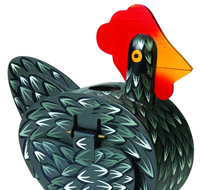Strange Lights in the Sky
 Some of the more eagle-eyed amongst you may have noticed a slightly odd tinge to the sky on certain nights recently. That's because we're currently experiencing a peak in solar activity, which means there is a strong possibility of seeing the Northern Lights.
Some of the more eagle-eyed amongst you may have noticed a slightly odd tinge to the sky on certain nights recently. That's because we're currently experiencing a peak in solar activity, which means there is a strong possibility of seeing the Northern Lights.
The Aurora Borealis, to give these stunning night time displays their scientific name, are the result of massive solar flares which send gas particles hurtling towards the Earth at a staggering 500 miles per second. When the particles collide with the Earth's atmosphere, some of them are transformed into energy, creating beautiful light displays. These take many stunning forms, from what look like the spokes of a giant umbrella to billowing curtains or snake-like streaks the length of the night sky.
So how do you get to see this amazing light show? The answer is to be VERY persistent. But it is worth it, as you can see from these Scran photos. Even if you live in the middle of a city or on the South coast, it is still possible to see the lights, you just have to know when to look and what to look for!
The best place to start is www.spaceweather.com which alerts you every time a large flare hurtles out from the Sun. Then it's a case of scanning the Northern horizon for signs of a green or red glow. Depending where you are in the Northern hemisphere, and on how much light pollution there is around you, you might mistake the lights for a slightly odd coloured cloud. But keep looking out for movement, and if you can, try and get out with your friends or family to a darker place.
Of course, if you're in the Southern hemisphere, you'll be looking for the Aurora Australis on the Southern horizon. But, wherever you are, don't forget your camera!

 (
(







































































































































































































